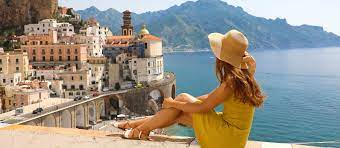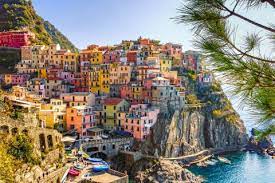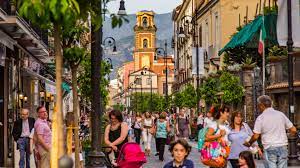Italy: Best time to visit
Rome: What is left to write about Italy? These days, there’s no question about whether or not a trip to the country is worthwhile—we sing its praises all the time, exalting the food, the culture, its hotels and its beauty. Television can’t get enough of it, neither can celebrities, nor can our own beloved readers. And while we’ve covered the country extensively, we’ve yet to expressly answer a key question: When is the best time to visit Italy?
It’s a question without a simple answer. Certainly, there is no bad time to go. But several factors—weather, crowds, cultural events—are important to consider in order to make your bucket-list vacation all that it’s meant to be and more. First, consider your goals. Do you dream of seeing the storied sites of cosmopolitan Rome and Florence? Or is spending a sleepy week lounging on its beautiful coast–gorging on fresh fish and swimming in the sea—more what you have in mind? There’s an ideal time of year for each of these.

To get the answers, we turned to our vast team of travel specialists and got in touch with a couple of Italy experts. Answering our call was Emily Fitzroy of Bellini Travel, the wizard who brought Succession to Tuscany and The White Lotus to Sicily (she even cameos in an episode of the latter!), and Georgia Yuill, an experience designer for travel company Butterfield & Robinson. Find their tips below.
To beat the heat and avoid the crowds, visit Italy’s cities (like Rome, seen here) during the mild winter months.
The seasons immediately pre- and post-high season (spring just before, and fall immediately after, summer) yield the highest dividends. “Late spring is the most magical time across most of Italy,” says Yuill, whose work focuses on the country’s northern regions—think Milan and the Dolomites–but extends south. Indeed, it is from April to June that you can expect mild weather across the country and fewer crowds than in later months—making it ideal for both the city, where congestion and heat can be deterrents, and the coast, though warmer weather may have you considering a later visit.

Yuill adds that life begins anew in springtime across the country, “from the vibrant floral boom on the meadows of the Dolomites to the warming seas in Sardinia and Sicily. It is also a period of renewed social energy—evening temperatures encourage gatherings over aperitivo and time outdoors is maximized before the heat cranks up.” There’s also the matter of the food: artichokes and asparagus are in season by May, and tomatoes are on their way, too.
Fitzroy prefers fall, when the countryside has enjoyed a robust season and is gratefully winding down its tourism trappings, while making the most of the season’s best produce. She says: “It has to be autumn, especially early October, when it’s still warm enough to have a final dip in the sea, to eat lunch al fresco, and feast on the first of the season’s white truffles and the new olive oil. The colors of the landscape are at their best, with scorched fields returning to their vivid green.” By this time, the summer crowds have dispersed, she says, and one will have an easier time navigating the cities as well—she notes queues for the Vatican and other heavily-trafficked sites are reduced. Fitzroy adds, “Visiting in late April and May is glorious, but be prepared for a much colder swim!”
Speaking of the cold, coastal destinations are best avoided during the dead of winter. From October until April, these places largely shut down—you may feel like a genius for booking a cheaper trip during the shoulder season only to arrive and find nothing to do but aimlessly wander from shuttered shop to deserted beach and back again. Yiull notes that she doesn’t encourage clients to hit the coast during colder months, despite fewer crowds (and expenses), because it’s generally true that you get what you pay for—so be ready for trickier weather and less liveliness.

Fitzroy does sing the praises of the Italian fishing village in winter, however, noting that towns with robust industry tend not to clear out in colder months as the resort-based ones do. “Towns that spring to mind are Sciacca in Sicily, Cetara on the Amalfi Coast, and Porto Santo Stefano on the Tuscan Coast. I’ve always adored being in a seaside town out of season,” she says. If your heart is set on hitting the coast during a winter trip to Italy, an active fishing village is your best bet to experience some bustle and life.
It follows Fitzroy’s note on autumn in the city that winter should be an excellent time to hit spots like Rome, Florence, and Venice–an added bonus being the beauty of holiday preparations in early December. The cold (almost always mild in Italy) is often an asset in urban areas; Yiull flags that Verona, Ferrara, Parma, and Milan are worthy visits during the winter. There’s also the Northern mountains for winter sports—the Dolomites get bountiful snow for skiing, and Trentino is home to the United States Olympic ski team.





